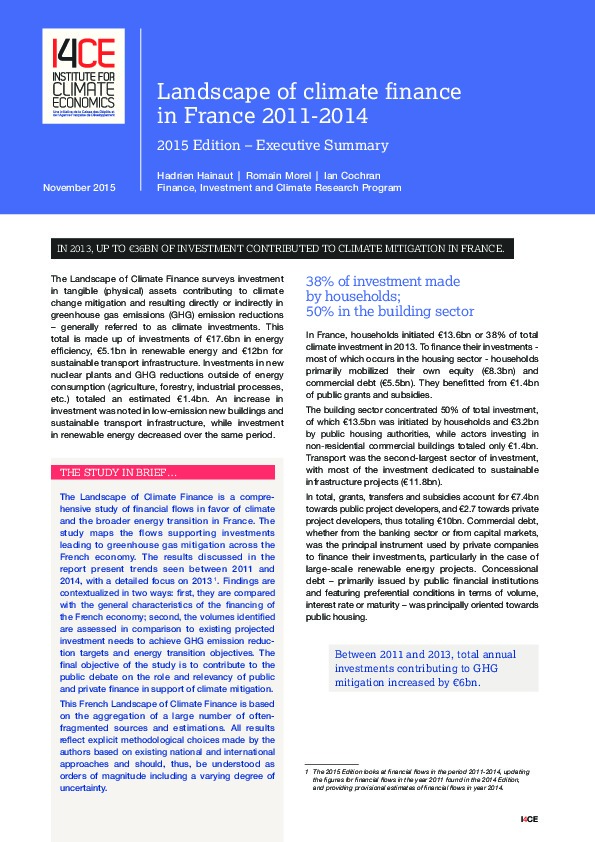Landscape of climate finance in France, 2015 edition
Energy efficiency and sustainable infrastructure are the main investment domains, followed by renewable energy and nuclear. Between 2011 and 2013, climate investment increased by €6bn, with high contrast between domains. Investment in new buildings’ energy efficiency and in sustainable infrastructure increased, whereas investment in renewable energy, particularly renewable power, decreased.
Up to €36bn invested in favor of climate in France in 2013
Households represented 38% of total climate investment
As project initiators, households invested more than private companies and the public sector. However, their own funds only covered 52% of their total investment. Other financing sources are comprised of grants, subsidies and transfers, for 11%, and bank loans, for 27%.
51% of total climate finance is public-driven
Both central and local governments support climate finance:
- Through traditional areas of public intervention, such as public housing or transport infrastructure, totaling €15bn in 2013
- Through incentives towards private sector to invest in climate-friendly projects, accounting for €4bn in 2013
Public-driven finance may not all be from public budgets. For example, they can be mobilized in direct transfer schemes between private actors or via concessional debt programs where private funds are combined with public support.
Additional €10 to €15bn needed to reach national energy transition objectives
This is the gap between current climate investments recorded in the Landscape and estimates of needs in the National Low-Carbon Strategy (SNBC, available in French here). Further investment needs are concentrated in housing retrofitting and renewable power generation. In a context of limited public finance capacity, engaging private finance is thus essential.
You can download the results of the 2015 Edition of the Landscape:
- Executive summary
- Full report, including five sectorial booklets on buildings, transport, industry, agriculture and centralized energy production
- Slides pack used for the presentation of the results

